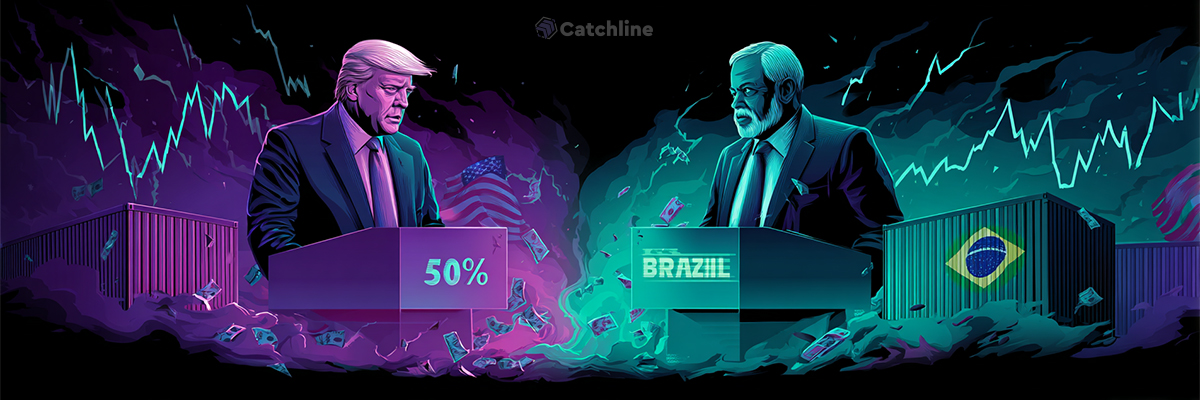Digital Currency War US Europe: How to Profit from the Divergence
Exclusive Interview: How to Profit from the Digital Currency War US Europe
The Catchline.io analytics team sat down with one of the world’s leading experts on central bank digital currencies to discuss the unique trading opportunities emerging from the digital currency war US Europe. This digital currency war US Europe creates unprecedented profit opportunities for informed traders.
Catchline: Dr. Morgan, thank you for taking the time to speak with our platform. Let’s cut to the chase — is the divergence between the US and Europe on digital currencies really creating opportunities for traders?
Dr. James Morgan (former Bank of England digital assets advisor, currently Managing Partner at Digital Monetary Futures):
Absolutely. What we’re witnessing is a tectonic shift in global monetary architecture. For the first time in history, two major economies have chosen diametrically opposed paths. The US has essentially outsourced the digital dollar function to private companies through stablecoins, while Europe is going down the path of complete government control. This creates structural inefficiencies that can yield 20-30% annually with the right approach.
Catchline: Can you break down the mechanics in simple terms for our traders?
Dr. Morgan: Imagine you have two bridges crossing the same river. The American bridge is private, with tolls, but it’s already operational. The European bridge is government-owned, free to use, but won’t open until November 2025. The difference in how people and money cross this “river” creates predictable distortions in capital flows.
Here’s a concrete example: USDT currently trades at a 0.8-1.2% premium on European exchanges compared to American ones. Why? Because European MiCA regulation makes stablecoins less attractive for institutional players, but retail demand remains high.
Catchline: What specific strategies would you recommend to our users?
Dr. Morgan: I’d highlight three main approaches, each with different levels of complexity and risk:
Strategy 1: “Simple Stablecoin Arbitrage”
For beginners and intermediate traders
This is the most straightforward strategy. You buy USDC on American exchanges like Coinbase and sell on European platforms like Bitstamp or Kraken. The spread is typically 0.5-1%, but since you can do this several times a day, monthly returns can reach 10-15%.
Key point: Always check withdrawal limits and fees. The optimal trade size is $50,000-100,000.
Strategy 2: “Banking Divergence”
For experienced traders
Here we’re playing the fact that American banks benefit from the stablecoin economy while European banks lose out from the digital euro. I recommend this structure:
Long (buy):
- JPMorgan (JPM) — they’re already making billions servicing stablecoins
- Bank of America (BAC) — actively developing crypto services
- Visa (V) — integrating USDC into their systems
Short (sell):
- Deutsche Bank (DBK) — most vulnerable to deposit outflows
- BNP Paribas (BNP) — high dependence on retail deposits
- Societe Generale (GLE) — weak digital infrastructure
Catchline: That sounds complex. How can a regular trader implement this?
Dr. Morgan: It’s actually simpler than it sounds. Most brokers allow you to create stock “baskets.” You simply buy American banks for the same amount you’re shorting European ones. The key is to rebalance monthly and hold the position for at least 6-12 months.
Strategy 3: “The EUR/USD Forward Paradox”
For advanced traders
This is my favorite strategy because the market hasn’t priced in the digital euro’s impact on EUR/USD.
Here’s the logic:
- The digital euro launch will cause outflows from commercial banks (people will move some deposits to digital wallets)
- The ECB will be forced to raise rates to compensate
- But the market is currently pricing in rate cuts!
How to play it:
- Now through October 2025: Sell EUR/USD via 6-month forwards
- Target level: 1.05-1.06 (currently 1.085)
- Stop loss: 1.11
- After November launch: Reverse position and buy EUR/USD targeting 1.12-1.14
Catchline: What risks should our traders be aware of?
Dr. Morgan: The main risk is political decisions. If Trump suddenly changes his mind and allows a digital dollar, or if the ECB delays the launch, strategies will need adjusting. That’s why I always recommend:
- Don’t put all your eggs in one basket — use maximum 20% of capital on these strategies
- Always set stop losses — political news can move markets 2-3% in minutes
- Stay informed — follow the ECB and Fed on Twitter, turn on notifications
Catchline: You mentioned some “secret indicators.” Care to share?
Dr. Morgan: [laughs] They’re not exactly secret, just overlooked by most:
Key Market Indicators to Watch
1. USDC Supply on Etherscan When supply grows by more than $1 billion per week — that’s a signal of institutional accumulation. Usually precedes dollar strength by 2-3 weeks.
2. Interest Rate Differential Between Aave (Europe) and Compound (US) When Aave rates are 2%+ higher — it’s a sign of dollar liquidity shortage in Europe. Perfect moment for arbitrage.
3. Google Trends “digital euro” in German Germans are the most active cash users in the EU. When searches spike, it means the ECB has activated its PR campaign. Usually 2-3 months before major decisions.
Trading Timeline and Phases
Catchline: What timeline do you see for these opportunities?
Dr. Morgan:
Phase 1 (Now – June 2025): Position accumulation. Volatility is low, perfect for building your portfolio.
Phase 2 (July – October 2025): Tension building. Volatility increases, short-term opportunities emerge.
Phase 3 (November 2025 – February 2026): Climax. Digital euro launch, maximum volatility, major profits.
Phase 4 (March 2026+): New normal. Markets adapt, opportunities diminish.
So traders have about 12-15 months to profit from this divergence.
Future Scenarios and Market Predictions
Catchline: Final question — what’s your prediction for how this all ends?
Dr. Morgan: I see three scenarios:
Scenario 1 (40% probability): Digital euro launches successfully but adoption is slow. EUR/USD ranges between 1.05-1.10 throughout 2026.
Scenario 2 (35% probability): Technical problems at launch cause panic. EUR/USD drops to 1.02-1.03, then sharp rebound.
Scenario 3 (25% probability): US changes position and announces its own CBDC. Massive repricing of all assets, gold shoots to $3,000.
Either way, volatility is guaranteed, and where there’s volatility, there’s profit for smart traders.
Expert Trading Advice and Risk Management
Catchline: Dr. Morgan, thank you for such a detailed breakdown. What final advice would you give Catchline traders?
Dr. Morgan: We’re living through a unique moment when the fundamental foundations of the monetary system are changing before our eyes. This happens once in a generation. My advice: educate yourself, start small, but take action. Those who understand these changes and act accordingly will be rewarded. Those who ignore them will be left behind.
And remember: in trading, it’s not just about knowledge, but discipline. Always use stop losses, don’t get greedy, and let your profits run.
About our guest: Dr. James Morgan is a recognized expert in central bank digital currencies with 15 years of experience in monetary policy. He has served as an advisor to the Bank of England, European Central Bank, and IMF. Author of “The Digital Currency Revolution” and over 50 academic publications. Currently Managing Partner at Digital Monetary Futures, a consulting firm specializing in CBDC strategies for institutional investors.
Start implementing Dr. Morgan’s strategies today on the Catchline.io platform. We provide all the tools you need for arbitrage between traditional and digital assets.
Risk Warning: Trading in financial markets involves risk. The strategies presented are not investment recommendations. Always conduct your own analysis before making trading decisions.
👉 Start now at Catchline.io





